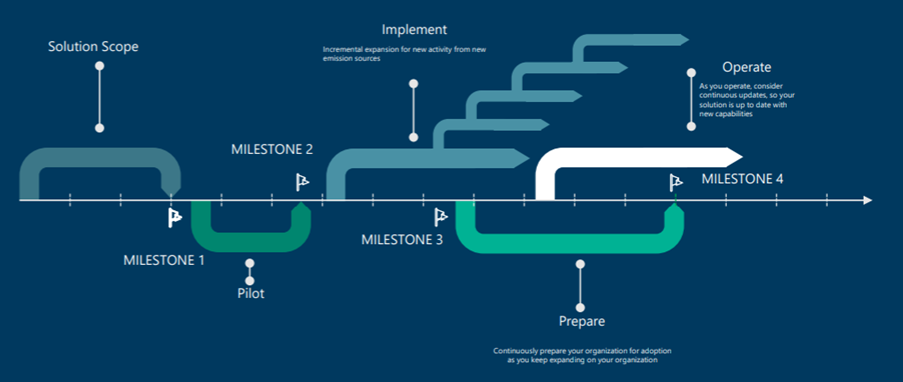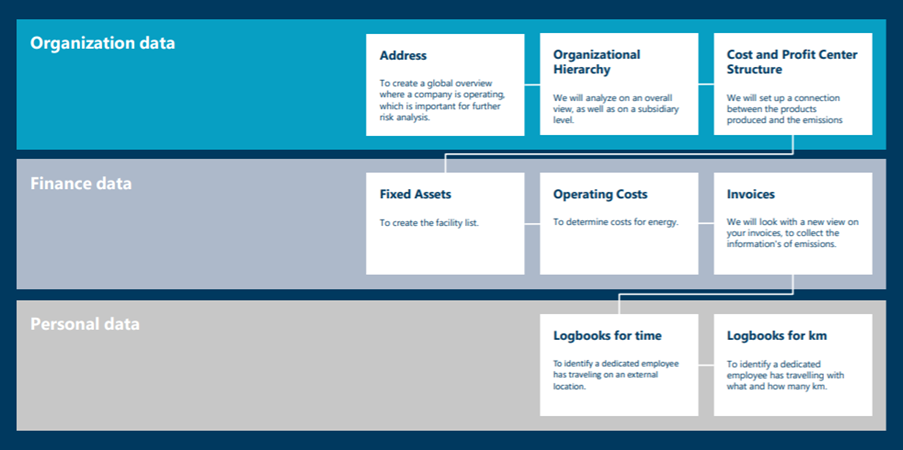HSO and Microsoft - your partner in your sustainable digital transformation
01
- Carrying out the ESG Assessment in in the dimensions Organization & Governance, Policy & Processes, System & Information and Talent & People
- Analysis of industry specific reporting requirements
- Identification of strengths and challenges
- Definition of key ESG KPIs
- Analysis of goals and optimization potential
02
- Identification of process and IT stakeholders
- Conducting a GAP analysis
- Development of measures
- Definition of the ESG IT target architecture
- Definition of an implementation roadmap
03
- Creation of the data model
- Integration of the data
- Change in the process and IT landscape
- Implementation of ESG reporting
- Testing and quality assurance
- Rollout, training and hypercare
In our project, we determine the scope of the project together in a preliminary study in which we analyse your ERP system.

We analyse your ERP system to identify the sources of emissions

Together with HSO emission sources are identified
HSO supports you in identifying the emission-specific area that is relevant to you. This can include direct emissions from business operations as well as indirect emissions from your company's services or products.
- HSO uses the DNA Accelerator to determine emissions inventory.
- The emission sources are determined by analyzing the company codes. The fixed assets* in the ERP system provide the direct and indirect emission sources.
- For this purpose, an inbound interface to the Microsoft Sustainability Manager is created, which enables the emissions inventory to be calculated, and visualized and the information determined to be managed.
The HSO project methodology takes the emission sources throughout the organization into account, depending on their scope.
- We use your organizational data to create the basic information in the Microsoft Sustainability Manager.
- The fixed assets are created based on location data and the respective activities are assigned. This can include multiple buildings or organizational units.
- HSO uses anonymized data from the human resources system to analyze, for example, business travel activities, including vehicle, rail and air travel and hotel stays.**
*Depending on a company's business activities, other sources may also be relevant, such as supply chain management.
*Depending on a company's business activities, other data may also be relevant.


